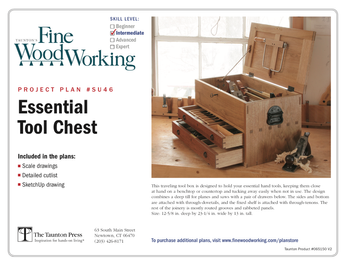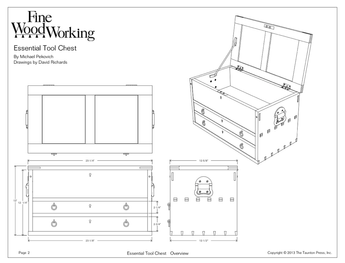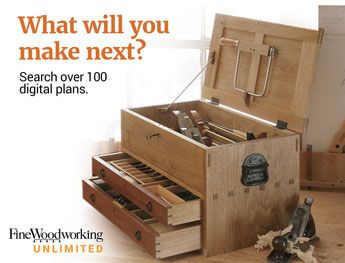Isn’t this the tool that started it all? But it’s the Rodney Dangerfield of hand tools, the hammer. Who ever pulls up a discussion of the hammer?
What do you prefer, wood handle or fiberglass or steel? You better answer wood or you’re outta here! Okay not really, different handles for different tasks. But I do love wood handles.
Problem with wood handles is that I have a tendency to let them get badly dirty; like glue gobs, ick, and etc. When first starting out in this trade my mentor told me my hammer handle was a mess, his was as clean as Aunt Myrtle’s china set. I thought in time I’d be able to keep my hammer handle clean. Hasn’t happened yet.
Today, in between stuff, I cleaned up some handles and poly-ed them and will wax them… I guess. I don’t know how else to handle them. (ignore pun). I don’t want them to go flying out of my hand if I wax them, but I never was one for pitching so I think we’re safe.
I’ve got a little square-head hammer for getting into corners. I made a mallet from some incredibly hard mahogany-like wood from a pallet from southeast Asia. I could break up concrete with it, can’t hardly drill into it nor does it like glue and it weighs like a rock.
Got hammers ?
















Replies
< Isn't this the tool that started it all? But it's the Rodney Dangerfield of hand tools, the hammer. Who ever pulls up a discussion of the hammer? > Well, it may not be respect, but every time my right hand picks one, my left hand starts to shake. ha, Maybe that is fear more than respect.
Back when I was building houses, my favorite framing hammer was a roofing hatchet. With the leather wrist strap, I could sink 16d nails in with one stroke all day long.
In the shop, I have several, but I don't guess I have a favorite, but I guess I probably use a 14 oz. more than the others.
I learned a long time ago that if I had a problem driving nails without bending them, it was due to the face getting slick. I like to lay a coarse grit abrasive sheet on the bench, then bare hard against it while scrubbing it around to get some fine scratches in the face. It is amazing how much traction those little grooves will add to the head / nail.
In the 1950's the framing hammer was born when the post-WWII home building boom spawned specialty trades, like guys who did nothing but frame houses in those sprawling southern California suburbs. They too liked roofing and rigging hatchets but the hatchet part posed a significant issue so they torched them off and welded on claws. The California framer was born... a 28oz hammer with a grooved face and a long handle.
There are renderings of claw hammers going back to at least the early 1500's such as this one by German Renaissance master Albrecht Dürer, dated 1514.
................................................
Men will never be free until the last king is strangled with the entrails of the last priest.~ Denis Diderot
yeah but they were not called California Framers :)
For what it is worth.. I use a long handle hammer with weight on the 'hitting' end!
The following is from an item (obviously an import, or from Arkansas)with assembly instructions that read:"step 2. Take out the plastic pole, using hammer to ham it into the hole made by step 1."This makes sense! You screw with a screwdriver, you chisel with a chisel, you file with a file, you ham with a hammer!
No, no, no . . .
If that where the way it worked you would screw with a screwer, chisel with a chiseler, and file with a filer. And you don't pli with a pliers or wrench with a wrench -- though perhaps you might with a wench. You don't plane with a planer unless it's electrified -- some of my planes are plainer than others, but not electric. A sawyer is a guy who operates a saw, so maybe a hammer is someone who drives a pig!
See the trouble you cause with idle speculation about such things. Verne
If a tree falls in the forest, and no one is there to cut it up and make something with it . . . what a waste!<!----><!----><!---->
If that where the way it worked .. I woul buy her a great set of tools and ask her to 'fix' me....
Now, there you go. Try to explain something that's straight forward and simple here, and before you know it, you're off in the weeds with no way to get back. All I can say is it's a darn good thing we're not all in the shop trying to build a project by committee! Just imagine the result. Verne
If a tree falls in the forest, and no one is there to cut it up and make something with it . . . what a waste!<!----><!----><!---->
"Isn't this the tool that started it all?"
No, if memory serves, it was the rock, used as a hammer, that started it all. But, even then, we had different rocks for different purposes. ;-)
Although there is much to be said for a nice, well-shaped Hickory handle, properly fitted into a well-designed head, my aesthetic favorite is still the old-style Estwings with handles made of leather discs fitted onto the steel shank.
I wonder how long it will be before we see the first L-N hammer?Ron
Ron,You mean they don't have one yet? How do they suggest you laterally set the blade of their LA Jack? A rock? I am truly shocked that they have a screwdriver for every screw on their plane but no hammer.Chris @ http://www.flairwoodwork.spaces.live.com
(soon to be http://www.flairwoodworks.com) - Success is not the key to happines. Happiness is the key to success. If you love what you are doing, you will be successful. - Albert Schweitzer
Edited 1/29/2009 3:15 pm by flairwoodworks
"You mean they don't have one yet?..."
View Image
williams,
is that one of those "play-the-glass-1/2-full" light-duty type hammers?
eef
ps
if so, i want one. mine's always 1/2 full.
My understanding is that this is what Lie-Nielsen's soon-to-be released hammers will look like. I haven't asked but I read they'll be available in brass and steel.
Larry,
Will the chardonnay come as part of the package, or is that an extra?
ray
Larry,
Drinkin and hammerin don't mix. I'm surprised at you; what kind of example are ye settin for us here?
:-)
Regards,Bob @ Kidderville Acres
A Woodworkers mind should be the sharpest tool in the shop!
roc was used as a hammer? Verne
If a tree falls in the forest, and no one is there to cut it up and make something with it . . . what a waste!<!----><!----><!---->
For years, the heart of my shop was a 10oz. welders chiping hammer with a wooden handle (original ash). It has a small striking face and a nice cross peen for starting nails. I remember when I got it, the first thing I did was to take all of the finish off the handle. An old farmer taught me that the finish on tool handles will raise blisters every time (he was proved right on many occasions). The hammer still holds a high place in my shop, but now days it's mostly power nailers and a Lignum Vite carving mallet.
rjt,
interesting. it's a bit hard to admit, but i love my old cabinet hammer. the hickory handle feels good in my hand. i wipe blo into it on a regular basis. i tend to feel guilty if any rust develops on the hammer head, and i quickly rush to wire wheel all traces off. i hate loaning it out, and i become easily frustrated if i misplace it. i too abrade the face to remove gunk and increase "grip". i never abuse the claw by using it to pry open paint cans and i do not dig holes with it. once, after packing up from a kitchen installation, i could not find my hammer. looked everywhere for it. finally had to uninstall the base cabinet, i'd left it in the toe kick.
eef
Cabinetmakers don't make mistakes like carpenters do so real cabinetmaker hammers don't have claws, they have cross peins!
Seriously, I find even medium sized claws will crush my work so I can't use them for cabinetry. And the cross pein really is essential for setting little spregs (archaic term for headless brads).
I have a pattern maker's hammer which is a real beauty. The head is octagonal and the pein has decorative filing. I've fitted it to a long ash handle. I find a bare handle, nearly soaked in linseed oil, makes my hammer easy to hold and hide glue resistant. In my tool chest, I keep a tiny claw hammer, with a beautiful original beech handle for really light work.
I love a nice looking hammer, and tho I don't collect hammers (like Schwarz does) I have a selection of really nice old hammers. In my plastic home repair tool box, I have a solid steel Estwing with a leather wrapped handle just like my Dad had. It feels like a sledge hammer when I use it.
What about "open" and "closed" heads? And what shape handles do you guys prefer? I've seen 18th c handles that look like they were turned. And they are often pointy at the butt end. They also feature fairly delicate necks. I think this gives some shock absorption as well as a "whip" effect. To really take advantage of this, I think you need a wood like ash or hickory. I split my handle from an ash log.
Adam
I use a 24 oz hickory handle California framer. It had cross hatch on the face bit it is all worn off from lots of use. I retired it to the shop when I got a new framer and it serves many purposes. It is a big hammer but as a carpenter we learn to use just the right amount of force in the hit and to aim it square so we don't dent the wood. You rosin the handle so it won't slip and yes I use the claws, to dig holes and chip concrete and sometimes as a chisel but we don't pull nails with it. That's a job for a square end nail puller so you don't tear up the wood so much. My shop hammer(old framer) now squares up face frames, adjusts doors and pounds nails in the wall to hang stuff on. That is when it's not lost under wood stacks. I say all this tongue in cheek and with humor and to add my two cents worth. I love reading knots and I get more information on every new post. This is the biggest (in my opinion) collection of woodworking knowledge anywhere. I only hope I get to meet some of the characters that post here some day at shows or classes. That is my take, my lunch break and now i will go back to work, Later.
Hello Adam,
When I saw your name I made a note to ask if you might be related to the Cherubini family of boat building fame, and I'm finally getting around to it. They do some pretty spectacular wood work in their sailboats so it wouldn't surprise me to find other woodworkers in the family tree. If you aren't, but you're interested to see what some potentially distant relations turn out, their web site is at http://www.cherubiniyachts.com/index.html
Also wanted to pass along that I like your attitude about hammers. I don't have much of a collection, but I've restored one medium-small brass claw that is very handy for light work and really pretty all polished up. The handle is turned hickory -- not round mind, but rounded in just the right way by using offset centers. A joy to use on the right jobs.
Pound on!Verne
If a tree falls in the forest, and no one is there to cut it up and make something with it . . . what a waste!<!----><!----><!---->
Verne,Yeah, that's my family. My cousin Dave is currently at the helm of the business my father and uncle started 30 odd years ago. Adam
All,
Grandad always used a brick hammer to do carpentry work. I always wondered about the lack of finess.
Well ,Grandad had influenza encephalitis after WWI. It left him with Von Economo's syndrome which is post-encephalitic Parkinson's disease. As far back as my father remembers, his hands always shook. All his tools were over weighted to decrease the tremor. I guess he got used to it as he was a plasterer and did really pretty work. I still have the hammer. I think I am going to make a nice frame for his hammer, plumb bob (still has plaster on it) and trowel.
Frank
PS. He could bang in a big framing nail in 2 or 3 licks with that hammer.
It's a pleasure to meet you! Your family builds some gorgeous boats. Sailing wasn't my first, but it was a very early love, and I've never recovered. The C44 would be near the top of my list if I were looking for a live-aboard cruiser. Verne
If a tree falls in the forest, and no one is there to cut it up and make something with it . . . what a waste!<!----><!----><!---->
OK, now you've got me thinking. I have lots of hammers lying around the shop and each has its own time to be used.
7 oz. curved claw hammer for driving brads and other 'small' stuff. I used to install the old-fashioned interlocking weatherstripping and this was the hammer of choice. (Also my grand-sons favorite hammer as it fits his small hand perfectly)
12 oz curved claw for light assembly
16 oz curved claw mostly for rough 2 x 4 work
16 oz streight claw for light demolition and rough work
magnetic tack hammer for driving those old fashioned blue carpet tacks
24 and 36 oz engineers hammer for really mashing things
Sledge hammer I refer to as my 'fine adjusting tool'
small dead-blow hammer for getting those shelves into tight dados
An asortment (5, 6, 8, 10, 12, 14, & 16 oz ball peen hammers for metal-work
Replacible face hammer (plastic / leather / lead / aluminum / brass )
for all sorts of goodies.
As for handles, most are wooden handles. I like them unfinished, but wipe them down with paint thinner periodically just to remove grease and hand oil. I only have one of the old leather-washered, steel shank Estwing hammers. It's easy on the hands when I need to do a lot of medium to heavy hammering. It does not like to sit out in a cold, damp shed or when I'm working in very wet areas, as the leather tends to get moldy from the extreme dampness.
My favorite??? My grandfathers leather working hammer (he was a
shoe-MAKER.) Every time I see it or handle it, it brings back lots of fond memories.
SawdustSteve Long Island, NY
I like my 2-1/2 lb. "Drilling" hammer. A 12-lb splitting maul is a nice addition to my shop :-)
This forum post is now archived. Commenting has been disabled